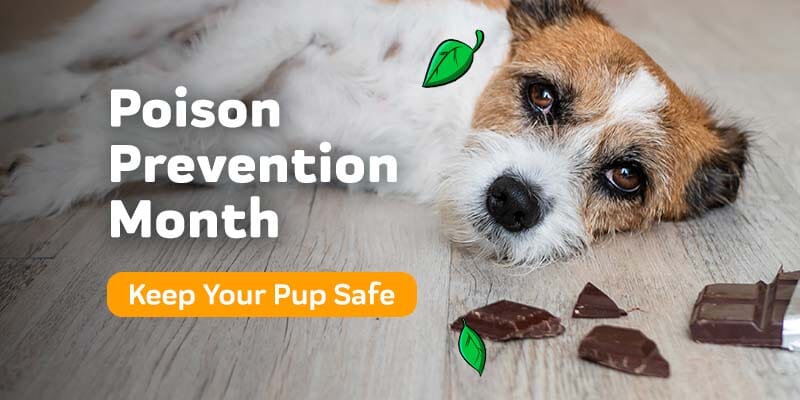
Despite your best intentions, occasionally the proverbial call of the wild will coax a dog directly through a side door, an open gate, or underneath a loose part of fencing. Especially mischievous canines might even make their “Houdini” routine a consistent occurrence, which leads to anxiety and worry for their pet owners. Microchips, small pieces of tech placed harmlessly underneath the skin, may assist in alleviating fears of wandering pups, yet only if they are registered correctly. Here, Innovet Pet Products discusses the topic of dog microchip registration.
How to Register Microchip
So, how to register pet microchip? Microchips are a typical “must-have” for responsible pet owners, right along with spaying/neutering a dog as well as vaccinations. Canine microchips from microchipregistrationcenter.com are so tiny that they may be implanted using a hypodermic needle, permitting the procedure to occur in mere minutes within a regular vet session.
How to register a microchip
Again, how to register your dog microchip? The majority of pet owners like to microchip their pets from microchipregistrationcenter during additional medical treatments, like neutering or spaying (more on this later), as their dog is already under anesthetics and will not protest to or struggle with the stick of a needle. A microchip itself is around the size of a grain of rice and securely tucked inside a sturdy, small glass shell that is built to stand up to placement underneath the dog’s skin. Indeed, it is so unobtrusive that once it is injected, there isn’t any way to detect he has been microchipped from microchipregistrationcenter.com without the use of a scanner.
Why It Is Important to Neuter or Spay Your Dog
Before we get back into the topic of register dog microchip, let us talk about why it is important to neuter or spay your dog. You have seen those commercials — you know the ones, in which sad music focuses on sadder scenarios of under-fed, overlooked cats and dogs left for naught on the city streets.
Every year, millions of otherwise healthy dogs and cats encounter their untimely death because there are not enough houses for the overpopulation of animals. Plus, while a push to “adopt not shop” and multiple other do-good campaigns are increasing more awareness to fight overpopulation than ever, there’s still more to do.
And it begins with you.
Six Reasons to Neuter or Spay Your Pet
As a proud dog or cat owner, you might be more than alert to the push to neuter or spay your animals. Whether it was the vet, neighbor, or nosey uncle or aunt who advised it, all of them have good intentions for doing so.
You are likely aware that neutering or spaying your pets is the main way to fight the overpopulation of possible pets being put to death; however, what about the advantages for your own home?
Below, we list 6 lesser-known reasons why it is vital that you neuter or spay your cat or dog:
Spay for better, longer days
Not only will spaying a female cat or dog eliminate the probability of an unplanned litter; it also will assist her in living a healthier, longer life! Did you have any idea that spaying prevents breast cancer, as well as uterine infections?
Spaying your cat or dog female before she goes into her initial heat is the best method of preventing such diseases, which are deadly in almost 50% of dogs and 90% of cats. Neutering also can prevent testicular cancer in your pet.
Beat the heat
If you have not suffered the wonders of a cat in heat, be warned: it is a less-than-pleasant situation that involves a lot of urinating and yowling, around your house.
Usually, female cats go into heat for 4 or 5 days every 3 weeks during mating season. If you do the math, that is a lot of urination and a lot of noise.
Your pup will not roam as far from home
Now, female felines and dogs are not the only ones we are placing under the microscope. Unneutered male dogs will go to any length to locate a mate—from running away to howling. Apart from the sadness and stress of missing your dog, he’s now at risk for potential run-ins with traffic or additional dominant canines.
More emphasis on the family
Un-neutered cats and dogs are more than likely to demonstrate behavioral issues such as spraying strong urine around your house to overt aggression or mark their territory. On the other hand, neutered dogs and cats are freed up to concentrate their love on their human families.
You will save money in the long-term
Sure, there is an upfront price to neuter or spay a pet; however, it is a lot less than nurturing a litter. Plus, you cannot place a price on peace of mind!
You are being a great neighbor
Keep in mind: your intact canine is going to stop at nothing to locate a mate! Plus, if your neighbor has a lady counterpart, think about the shock that befalls both households.
Animals that are left on the road pose an issue in so many neighborhoods around the country. They may damage the environment, cause road accidents, as well as prey on wildlife.
Debunking the Spaying and Neutering Myths
If you are still undecided, read further to learn about a few of the myths related to this critical procedure.
Neutering or spaying won’t make your dog or cat “fat”
If there is anything that will pack on the pounds for your pet (more on this below in the next section), it is lack of exercise and overfeeding, not this operation. As with human beings, animals, as well, require a good amount of exercise and a proper diet for optimal living.
Neutering might not be the fast fix you’re seeking concerning behavior issues
Neutering assists in stabilizing behavior by regulating levels of testosterone, yet there isn’t any guarantee that your pup is going to calm down. If your dog has learned behaviors through lack of discipline or bad habits, that is a whole different issue. The impact of neutering varies per dog, based upon history, physiology, as well as personality.
Now that we have covered the difficult issues, the choice lies in your court: will you or won’t you? Because the future of so many pets’ lives, as well as the life of your own furry friend, might depend on it.
Keeping the Weight off of Your Puppy
While it might be difficult to say no to your furry pal’s cute face when they’re begging for a second snack, that additional nugget of love is not making them any healthier. Obesity is typically defined as excessive body fat. While obesity is typical in dogs of every age, it commonly impacts dogs from 5 - 10 years old, and some dog breeds are more susceptible to obesity, such as Beagles, Dachshunds, as well as Labradors. Furthermore, obesity may cause a plethora of diseases and conditions in your dog. Thankfully, there are a multitude of measures you and your dog may take to get her or his weight under control.
Is there an inch to pinch on your dog?

The majority of vets will be glad to let you utilize their scales to figure out if your pup is on the heftier side. But, there’s a more convenient method of determining if your pup is obese without attempting to get them to sit on a bathroom scale. When the pooch is at healthy weight, you ought to have the ability to easily feel their ribs upon the side of their chest. If you’re checking the dog, they ought to have a defined waistline and their general shape should look like an hourglass, and not a pear. If the dog struck out on both those tests, it might be time to begin to alter her or his lifestyle.
A Healthy Dog is a Happier Dog
While it might seem like your dog is happier with a little jiggle, do not allow their jolly demeanor to fool you. Dog obesity may cause long-lasting and serious health problems. One of the most typical complications includes the development of sugar diabetes or diabetes mellitus. If you have observed your dog urinating more consistently and losing their appetite, you will have to take them to their vet for a thorough check-up.
Despite diseases, the additional weight may start to damage the dog’s bones and joints. It’s especially a fact in smaller dog breeds in which only a couple of more pounds may start to wreak havoc. This extra pressure may lead to hip dysplasia or arthritis. Plus, if that was not enough, a seriously overweight pup may get the exact same afflictions that impact obese humans, like difficulty breathing, decreased stamina, as well as hypertension.
Stop Super Sizing Dinner
One good thing about being a dog owner is that you’ll get to make the choices for your dog, even if they do not like them. Step one in getting the pup’s weight under control includes getting their portions under control. The majority of dogs are not going to deny that additional kibble you give them; therefore, it’s up to you to offer them a healthy food quantity.
Speak to your veterinarian about what kind of dog food you’re presently serving your dog and how many calories they really should be consuming per day. Thankfully, the majority of dog food will contain the calories per cup printed on its bag. You might get a bit of frown from your dog, yet keep in mind that you’re doing it to make their lives better. Plus, do not forget to count those chews and treats in their daily consumption. Additionally, give consideration to bioavailability while shopping for your pup’s food. Use hemp-only, highly absorptive products such as Innovet Pet Products so it is possible to keep your pooch healthy without restricting their snacks too much. Your pup will like that you placed their health first.
Let Us Get Physical
Your dog likely enjoys cuddling on the sofa with you all afternoon or taking a nap in the sun. However, if you want your hefty dog to shed the weight, you’ll need to get them up and moving. Usually, obesity is caused by your dog overeating and not exercising sufficiently. As a matter of fact, as little as an additional one percent boost in calories may result in a 25 percent rise in body weight. But just like you cannot hop off the sofa and into a marathon, do not expect your dog to do the same.
Start by taking the dog on some brief walks with ample time to rest in between. Socializing the dog and tossing them an old ball also are good ways to get them moving. You’ll have to be wary when the weather is hot. Obese dogs can’t regulate their body temperature as well as a pup that has a healthy weight, and quickly will become overheated if they overexert.
Keep in mind that you’re in control of the dog’s health, both the bad and the good. Keeping your pup’s weight under control will have them appreciating a more fulfilling, longer life. Plus, with their reduced weight, you will have lower vet bills.
How Will Microchipping in Dogs Work?

Don’t have any idea how microchips work? The procedure is really very simple. Whenever a tag-less, lost dog winds up at a veterinarian’s clinic or animal shelter through the work of animal control or a good Samaritan, the first thing the team members will do is to scan for a microchip. They will use a tiny handheld device and run it over their body, not unlike the metal detector wands used in airport security. A microchip implant doesn’t have a power source to read, yet instead, a radio frequency which corresponds to the chip’s identity number. A scanner will “read” their number and give it to the team member, allowing them to look it up on the internet.
Because chips are implanted and the precise manufacturer is not necessarily a given, shelters and vet offices use database tools to allow them to browse many manufacturers at one time. If a match is found, they then can get in touch with the owner to come and get their wayward dog.
What Should You Know About Post-Microchipping?
The microchip that gets implanted in a dog will have nine, ten, or fifteen digits, depending upon the chip’s manufacturer. One common myth is that the chip alone has the pet owner’s details stored on it – that’s incorrect. The only thing that is “stored” on the chip is a number, and the effort behind reuniting a lost pet with their owner actually comes from diligent registration.
Once animal owners have set up a microchip’s identity number, they have to go on the internet to the manufacturer’s site and enter in important information. The clinic or vet offering the microchipping service will have the ability to provide both the chip ID number and website right after implantation to ensure fast registry. If an owner does not register the microchip, the only details a well-meaning vet, neighbor, or animal shelter will have is the identity number which leads to nothing – no address, no name, no phone number, or even an animal’s name. That’s the reason why registration is so critical for reuniting with one’s dog in case of an “unscheduled walk.”
How To Register A Dog's Microchip
So, how to register my dog's microchip? Modern-day convenience has made it more convenient now more than ever to keep things the same, no matter where individuals or a family may move – email addresses, cell phone numbers, etc. However, microchip registries have a way of falling through the cracks, and updates might slip a dog owner’s mind in the middle of a move. If the microchip registry is not up-to-date the vet clinic or office with a lost dog might not have the ability to get ahold of his pet owners in a timely manner. In order to prevent forgetting this crucial measure, leave a post-it note on whatever item that is likely to move last – in between a box spring and mattress, for instance. If the microchip brand permits it, pet owners also may want to add details that aren’t likely to change, like an email address.
Also, if the family pet has to be relocated or rehomed for any purpose, be sure that you update your registry information. Whether pet people are serving with the military, are overseas, or otherwise unavailable, the registry ought to lead to someone who is available to immediately retrieve the owner’s pet.
Ensuring Your Pet’s Safety and Whereabouts
Where to register pet microchip? Try microchipregistrationcenter.com. A microchip is a dog owner’s top defense against accidentally losing a beloved pet to a mistaken “good Samaritan” adoption or shelter. Lastly, if a pup is an especially in-demand breed, that small chip also can be essential to proving lawful ownership of one’s dog, ensuring dogs and their loving pet parents are truly inseparable.
Sources:
Microchipping Your Dog or CatMicrochipping of Animals FAQ
How do Pet Microchips Work?
Why is it important to ensure my pet is microchipped
Microchipping Your Dog

















